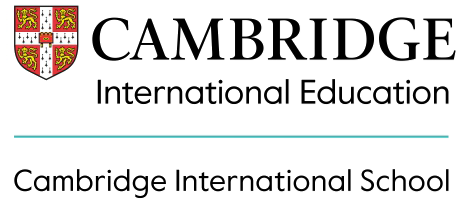Curriculum Structure
The curriculum is built around four key areas of early childhood development:
Physical Development
Enhancing fine and gross motor skills through various activities.
Cognitive Development
Stimulating thinking, problem-solving, and understanding.
Language & Communication Development
Fostering effective communication skills and language proficiency..
Social & Emotional Development
Promoting interpersonal skills, emotional intelligence, and self-awareness.
These curriculum areas are further split into six subject areas:
Communication, language & literacy
Speaking, listening, reading and writing are crucial to children’s early development. Showing children the importance of language through fun activities and encouraging them to engage with a wide range of texts helps to ignite a lifelong curiosity for learning.
While the Cambridge Early Years curriculum is designed for teaching and learning in English, celebrating the home language(s) of learners is also very important.
The speaking and listening learning statements below illustrate progression across the three stages:
EY 1 Listen and respond appropriately in everyday situations, although not necessarily immediately.
EY 2 Listen to and take into account what others have to say.
EY3 Listen and respond appropriately to familiar and less familiar adults and peers.
Creative expression
Creative expression allows children to communicate their ideas and develop their imagination through art and design, music, dance and drama. This important curriculum area brings together skills and cognitive processes from across the whole curriculum.
The art and design learning statements below illustrate progression across the three stages.
EY 1 Explore visual and tactile qualities in the natural and made world, for example, help to make a ‘feely wall’ with surfaces that have different textures (e.g. rough, smooth, soft).
EY 2 Respond to natural, made and imaginary worlds through play and by making art and design, for example, visit a forest and then collaborate to paint or construct their own miniature forest.
EY3 Gather, record and respond to experiences and visual information from natural and made sources, for example, make a collection of textures from outside surfaces using plasticine impressions and printing.
Mathematics
At an early age, it’s important to help children recognise how mathematics impacts everyday life. Through games and activities, we can introduce children to mathematical language,thinking and concepts that they will need when they start their primary education.
The learning statements from shape, space and measure below illustrate progression across the three stages.
EY 1 Recognise and talk about patterns in the environment.
EY 2 Copy and create simple repeating patterns of repeating units (e.g. [red, blue]; [red, blue yellow]; [red, blue, blue]; [red, blue, blue, yellow]) and say what would come next in the pattern.
EY3 Use familiar language to describe sequences of items, including identifying errors in patterns of colour, shape or size, for example, ‘It goes square, circle, triangle, square, circle, circle … the last one is wrong, it should be a triangle’.
Creative expression
Creative expression allows children to communicate their ideas and develop their imagination through art and design, music, dance and drama. This important curriculum area brings together skills and cognitive processes from across the whole curriculum.
The art and design learning statements below illustrate progression across the three stages.
EY 1 Explore visual and tactile qualities in the natural and made world, for example, help to make a ‘feely wall’ with surfaces that have different textures (e.g. rough, smooth, soft).
EY 2 Respond to natural, made and imaginary worlds through play and by making art and design, for example, visit a forest and then collaborate to paint or construct their own miniature forest.
EY3 Gather, record and respond to experiences and visual information from natural and made sources, for example, make a collection of textures from outside surfaces using plasticine impressions and printing.
Physical development
Our curriculum encourages children to develop movement skills through play, promoting positive attitudes towards exercise and laying the foundations for healthy, active lives.
The learning statements below illustrate progression across the three stages.
EY 1 Respond appropriately to movement instructions, including in imaginative contents, for example, ‘Stomp like an elephant.’, ‘Leap from rock to rock.’, ‘Twist to see if the pirate is chasing you.’.
EY 2 Follow basic rules and sequences of simple movement instructions, including instructions containing simple directional language, for example, ‘Stretch up.’, ‘Crouch down.’.
EY3 Follow movement instructions and basic rules, including instructions that include left and right, for example ‘Jump left.’, ‘Side-step right.’.
Understanding the world
Children’s natural curiosity must be encouraged, so that they are equipped to reflect, question, explore and interact, and guided in their understanding of the world. This area of the curriculum lays foundations for a range of different subjects in primary education and beyond, including science, digital literacy, history, geography and religious education.
The learning statements from scientific thinking below illustrate progression across the stages.
EY 1 Follow instructions to grow plants from seeds and talk about their observations as the plants grow.
EY 2 Grow and care for different plants, knowing that they need light and water to survive.
EY3 Grow and care for different plants, exploring what makes a difference to how well a plant grows (e.g. not giving too much water, some plants only grow well in the sunniest spots
Join Us on This Exciting Learning Journey!
At DPS Noida, we are committed to laying a strong foundation for your child’s bright future through the Cambridge Early Years Programme. Our carefully designed curriculum ensures that young learners develop essential skills in a nurturing and engaging environment.
